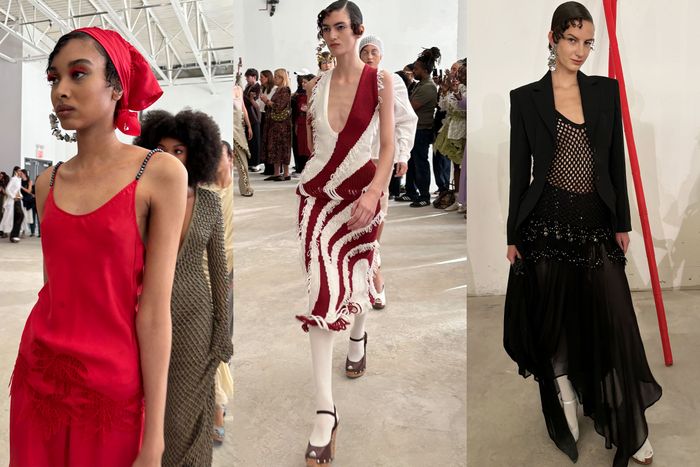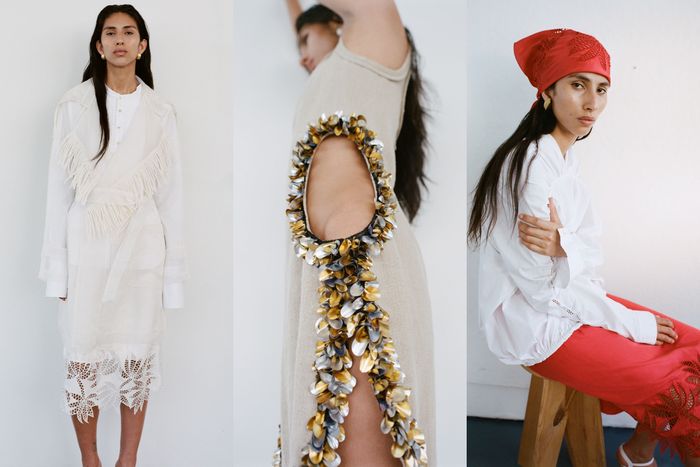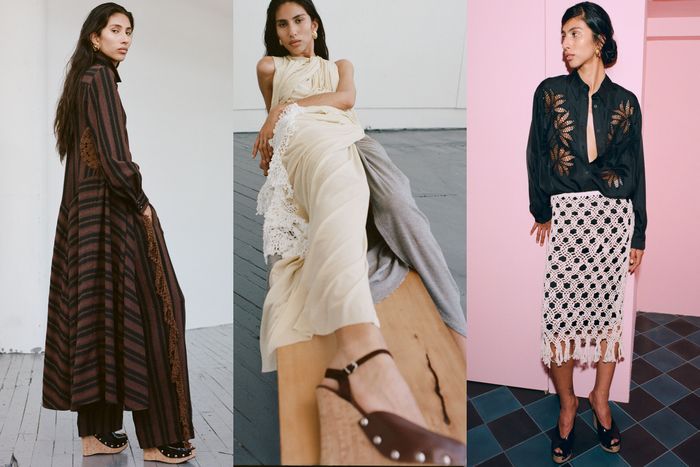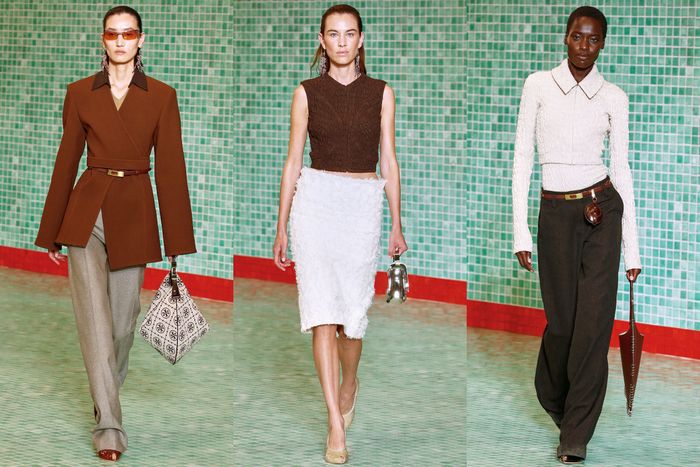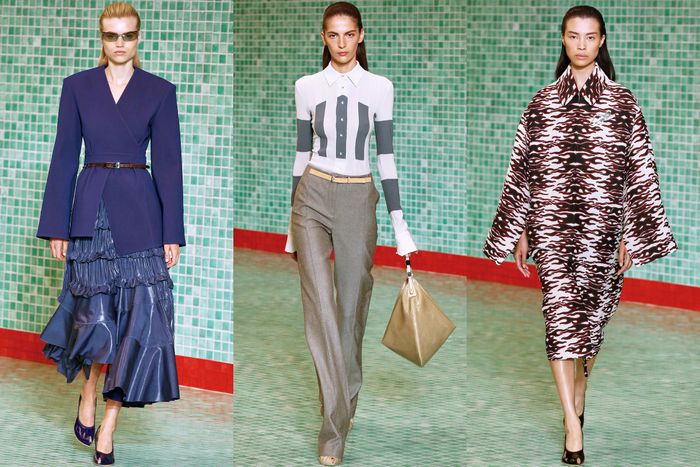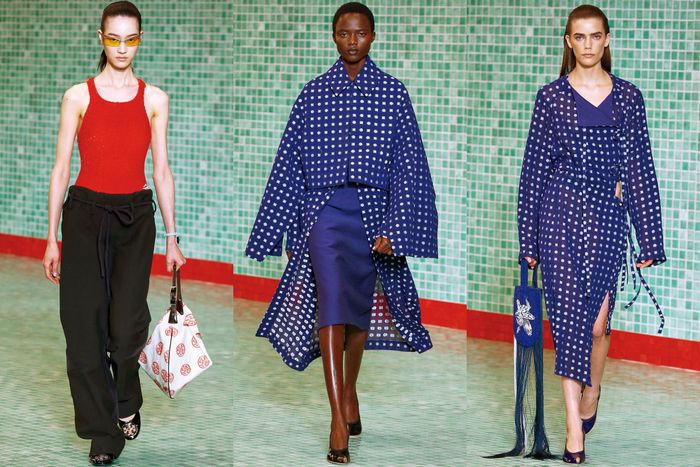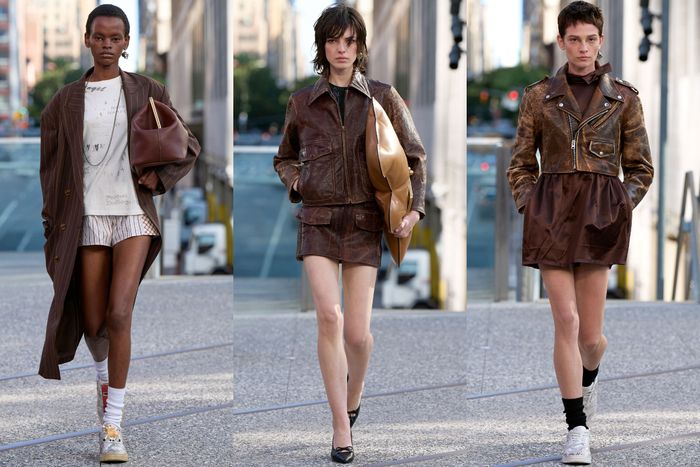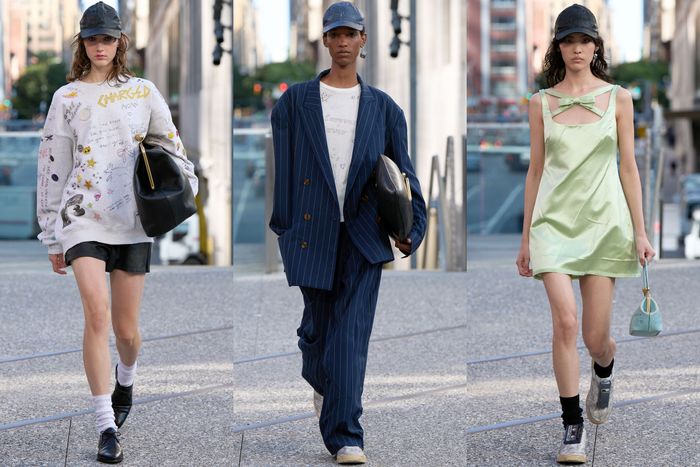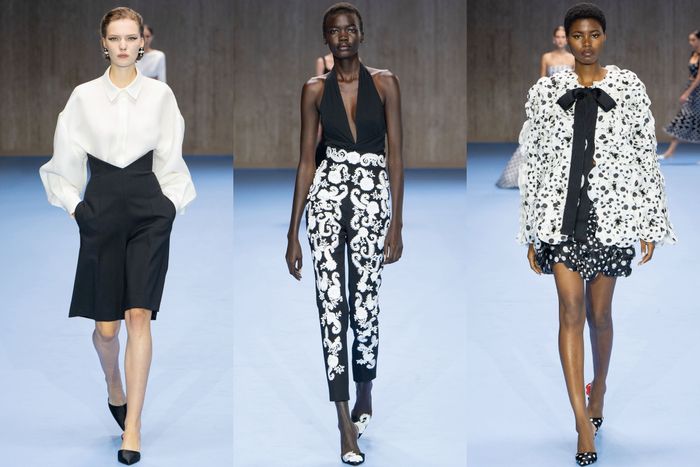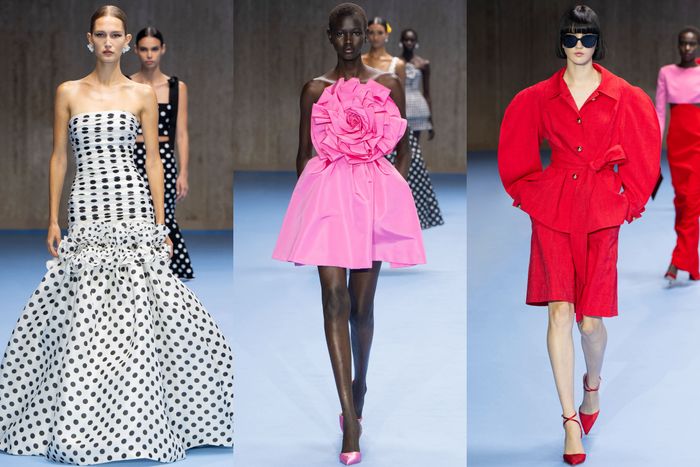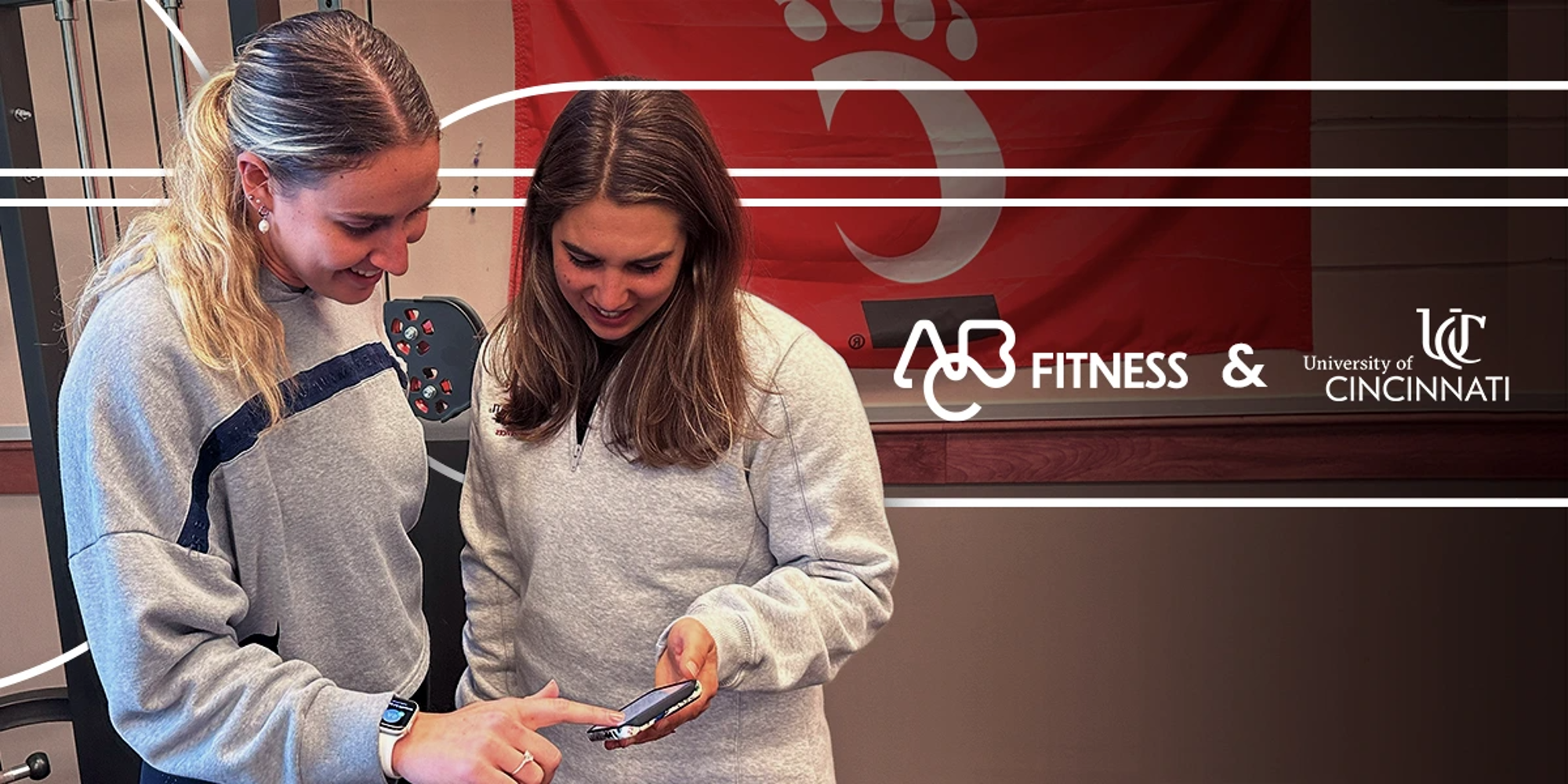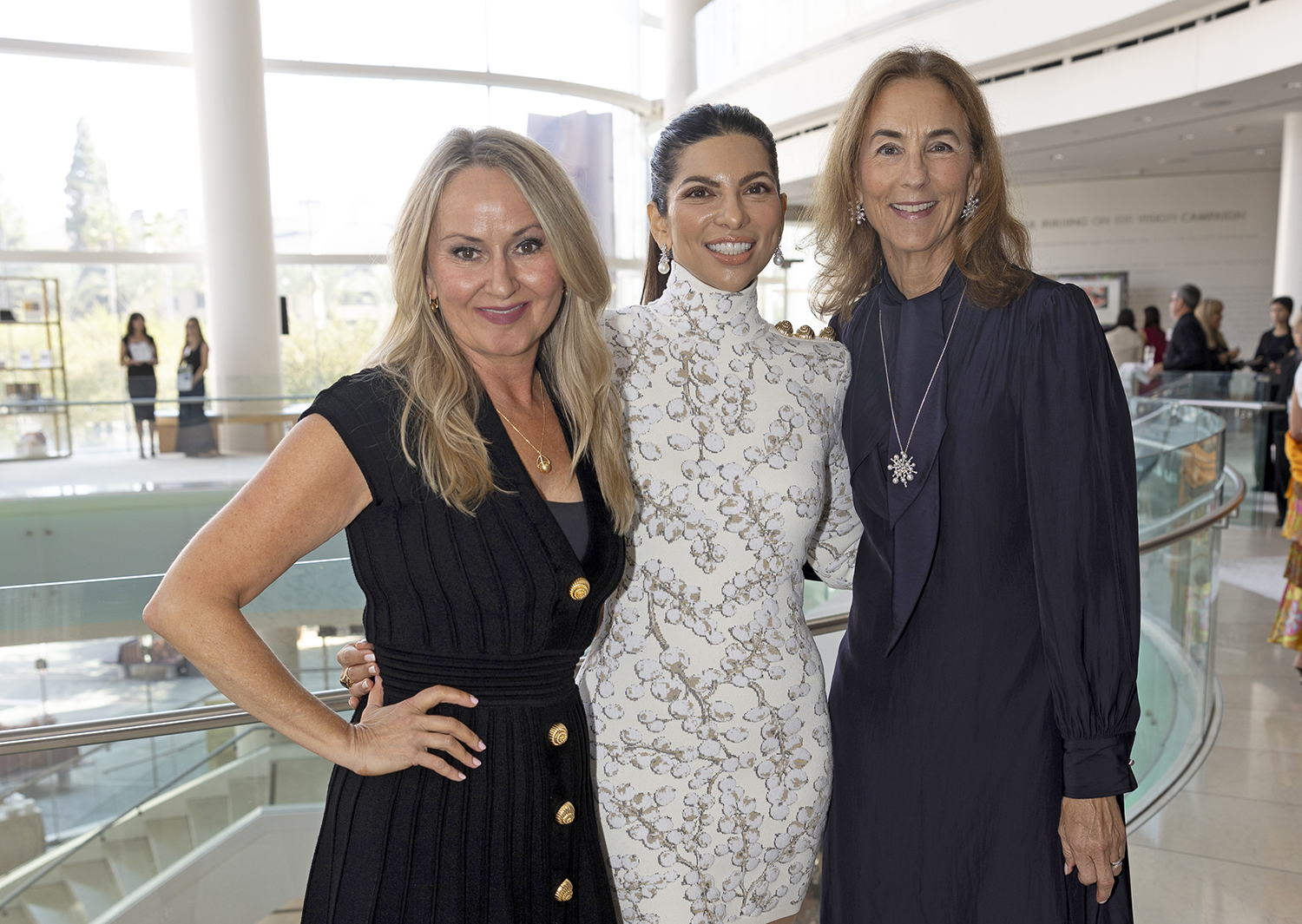Fashion
At New York Fashion Week, Letting Form Do the Work
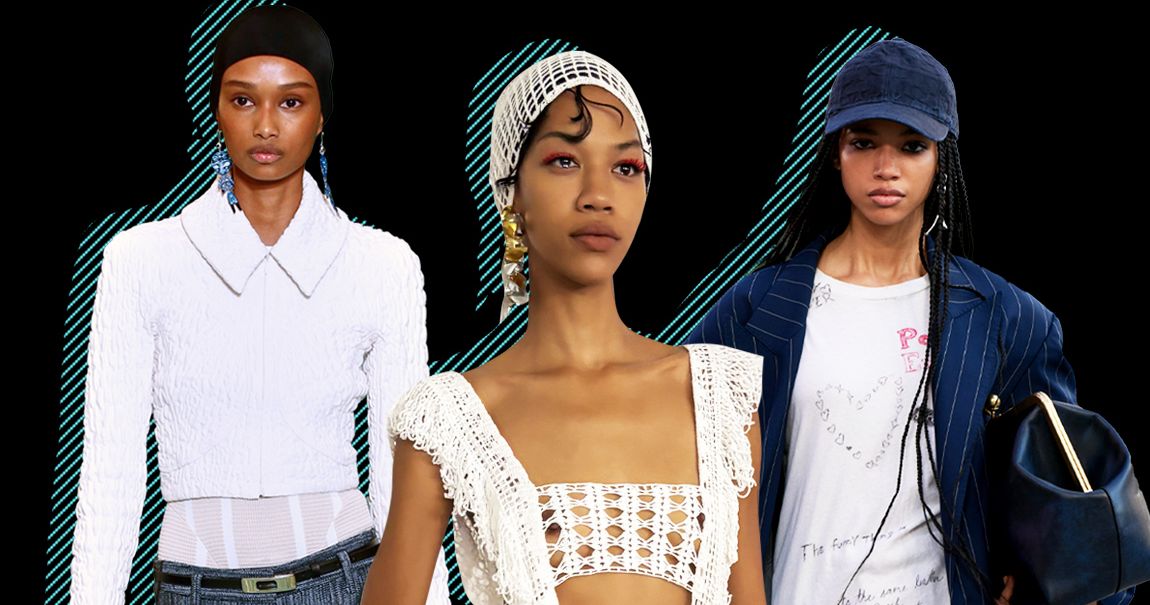
Photo-Illustration: by The Cut; Photos: Courtesy of Tory Burch, Cathy Horyn, Coach
Rachel Scott, the talented designer behind the label Diotima, likes the idea of a “performative properness.” That just means dressing well and with a certain grace or creative expression when one goes out, whether to work or church or for dinner. But since dressing properly is no longer a common practice, as it was until a couple of decades ago, we have to call it “performative.” Many people attending Fashion Week are performing; there’s a hard-edged, stilted quality to their makeup, hair and clothing. They’ve been schooled by social media and cameras and looking, perhaps, at too many celebrities on red carpets. It’s addictive and weird. I watched them in the rows at Tory Burch’s show on Monday night in Brooklyn, all glossy, and coming out of Coach near the High Line. They’d die if they put a foot wrong.
The Diotima show.
Photo: Cathy Horyn
But that’s not the sensation of looking at Rachel Scott’s clothes. Sure, her models on Monday afternoon — in a big, informal setting where the girls lingered among the guests—had dramatic makeup; their eyelashes were thickly coated with mascara or a powder to suggest white or red coral. Some of the women also wore head scarves, a nod to tradition and, as well, Scott’s native Jamaica. But Scott has a knack for making the dressy (or the sensual) seem real and full of pleasure — and not a contrived style done for a show and limited audience.
Diotima
Photo: Austin Sandhaus
Her clothes imply an understanding of feminine dressing — the desire, for example, for long fluid lines, pretty embellishment and a fit that shows the body but doesn’t constrict it. Scott, who worked with Rachel Comey before opening her own business, in 2021, isn’t a conceptual or big-picture thinker, like Demna or Miuccia Prada. She reminds me, in fact, of a painter from an earlier century whose subjects are everyday things, close to home. Handcrafts like faggoting and crochet are already part of the Diotima language, and this season Scott used melted pailletes for trim to suggest the texture of oyster shells.
Diotima
Photo: Austin Sandhaus
“I do a lot of embellishment but I try not to make it obvious,” she said. There is an integral quality about her work, not to mention a high degree of integrity. Scott knows her mind. Among the standout pieces in this refined, headstrong, individual collection were a sleeveless white knit top and matching slim skirt with bias stripes of rust-red traced by small white loops of fringe; a long-sleeve cotton shirt dress in a brown and black stripe over matching wide pants (or perhaps it was a skirt), and elegant masculine black cutaway jacket over a draped sheer black skirt embellished with a wide hip panel of black beads and worn with a mesh top. The last was performative and dreamy at once.
When asked about her business, Scott said it has not broken even yet but she expects that to change in the new year.
Tory Burch’s show, in the former Domino Sugar factory, against a backdrop of pool-green ceramic tiles, had a deliberate tension, as her shows often do. It was conveyed in the opening look: a sleeveless top made of a quilted blend of taupe wool and silk that showed off the model’s arms and also reminded me of a safety vest worn by a horse rider. Burch paired the top with a dark pencil skirt that stood a couple of inches away from the waist, as if it had a mind of its own.
Tory Burch
Photo: Courtesy of Tory Burch
Tory Burch
Photo: Courtesy of Tory Burch
Well, that’s fashion. But I got her point: the top relayed a sense of precision and strength, the tricky skirt a sense of freedom. Burch did a lot with this collection and I must admit I liked it better later, after I’d eaten a plate of ravioli and looked at her show images this morning. It was the yin and yang of her sharply tailored and flattering trousers with a snug jacket or a sleek, long-sleeve polo shirt. Or a tank swimsuit — a charming, simple proposal — with a pair of velour sweatpants. Or the free-wheeling suggestion of a marine-blue blazer with a flouncy, many-pleated skirt in blue jersey. Just as in sync with her theme of freedom and form were a series of long and loose wrap dresses in cotton jacquard or viscose with one side partially notched out.
Tory Burch
Photo: Courtesy of Tory Burch
“I wanted to show on the High Line after showing in three beautiful historic venues,” Stuart Vevers, the creative director of Coach, said. “Because I wanted that sense of the city, the urgency. And to celebrate some real clothes, because that’s ultimately what Coach is about.”
Coach
Photo: ISIDORE MONTAG/Courtesy of Coach
Coach
Photo: ISIDORE MONTAG/Courtesy of Coach
Plainly, it took an extraordinary amount of effort and money to present this “real” collection of khakis, school blazers and sweatshirts among the elevated greenery in Hudson Yards. But Vevers’ intuition about turning Coach ever so slightly toward modest and straightforward American sportswear paid off with a concise statement, and a collection loaded with strong and quirky elements, notably the pen-scribbled sweatshirts and terrific recut versions of old leather jackets, especially the newer cropped versions. The masculine suit was lightly deconstructed—that is, it was done in soft cotton. Cotton striped pajamas entered the act, as did goofily decorated handbags. But the compelling, cooler factor this time, at least for women, was the shorter silhouette with heels.
On a pale blue carpet in the lobby of a Financial District building, Wes Gordon opened a smooth sailing Carolina Herrera show with black and white looks, 28 in all, including a slim, kimono-style dress and a pair of high-waisted shorts with a crisp white shirt. He dabbled in polka dots, checks and embellished pants before opening his spring story to rich and clear colors like bright pink, rose-red, deep blue and a violet he called Elizabeth Taylor blue, after her eyes.
Carolina Herrera
Photo: Courtesy of Carolina Herrera
Carolina Herrera
Photo: Courtesy of Carolina Herrera
“No tricks,” Gordon said of his intentions. He whittled down each look, whether for day or night, to a telling Herrera exclamation point or gesture, like a side swag of fabric or an evening jacket composed of a mass of white and black tulle flowers or those chic toreador pants. He let the form and color do the work.

